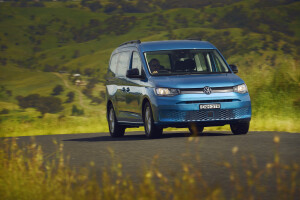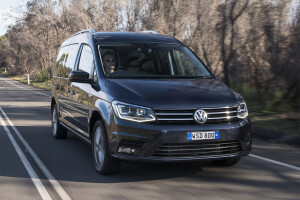Latest Review
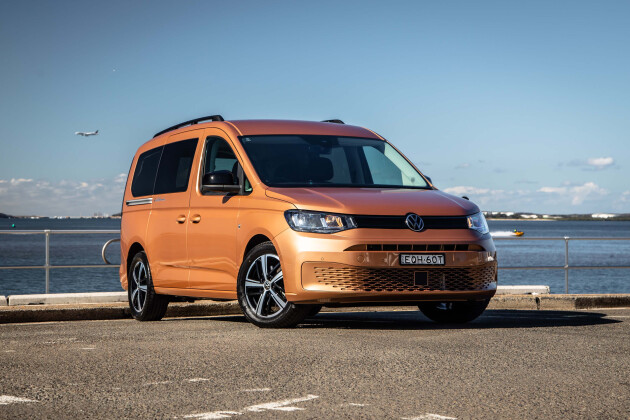
2022 Volkswagen Caddy California diesel review
Volkswagen’s versatile Caddy van adds a weekend play version that can still do the job during the week
Time passes with great speed in these trying times. I was utterly convinced that the brand new Volkswagen Caddy I drove and immediately became very fond of was just a few months ago. It was, in fact, November 2021. I guess six months of persistent rain will do that to you.
One reason I mention this unseemly passing of time is that when we first drove the new Caddy, VW told us that the California would be along shortly. As supply chain yada yada yada you get the picture.
I know the California isn’t a new concept, even if the name is new – it used to be called the Beach here and amusingly (and for no doubt copyright-related reasons), Life Tramper in other markets, but to put the idea into such a capable package was intriguing.
Based on the long wheelbase Caddy Life Maxi, the California ships with five seats and sleeping accommodation for two in a fold-out bed and, if they’re small enough, room for a couple of patient kids underneath. It’s a mini campervan, in other words, but a lot more versatile than that sounds.
Pricing and features
For $57,690 before on-road costs, you’ll find yourself in the diesel TDI 320 version of the Caddy California, $1900 more than the 1.5-litre turbo-petrol.
You get 17-inch alloys, a six-speaker stereo, dual-zone climate control, reversing camera, keyless entry and start, front and rear parking sensors, adaptive cruise control, auto halogen headlights, leather steering wheel trim, auto parking, heated and folding door mirrors, power front windows, cloth upholstery and a full-size spare.
VW’s latest media system – straight out of the Golf – runs on an 8.25-inch touchscreen. It’s not very popular with some users but familiarity will make it easier to use.
I will confess to not liking on-screen sliders, so maybe reverting to big targets you stab to go up and down things like volume and temperature would be in order. The system features Apple CarPlay and Android Auto as well as DAB+ digital radio and the two USB-C ports will connect your phones.
The California has six airbags (including curtains that cover the second row), stability and traction controls, seat belt warning lights for all passengers, post-collision braking, forward auto emergency braking (low speed with pedestrian and cyclist detection), driver fatigue detection, rear parking sensors, reversing camera, rear cross-traffic alert, lane change assistance, blind-spot monitoring, and junction assist.
The back seat has three top tether anchors and two sets of ISOFIX points.
Slightly annoyingly, LED headlights are a hefty $2020, sat-nav is $1660 and metallic paint a not-inconsiderable $1115, with just two of the 12 colour choices being freebies.
Cherry Red is $305 for some reason. Less annoyingly, a huge sunroof is $1420, the usefulness of which will shortly become apparent.
You can also pay a modest $75 for two extra 12-volt outlets.
Naturally, the options don’t stop there and there is of course a very active aftermarket accessory business supplying all sorts of cleverness to extend the camper lifestyle vibe, in some cases quite literally with a clever tent that encloses the rear with the tailgate open.
Comfort and space
Space is the California’s thing. While the Caddy Cargo is all about, well, cargo, the California is based on the passenger-carrying version known as Caddy Life. VW has tossed out the third row (as in the Crewvan) and then loaded up with a double bed.
Unlike the Crewvan, the interior is carpeted instead of either plastic or plywood floors, ensuring it’s warmer in winter and quieter all the time.
The bed collapses into the space behind the back seats and can be completely removed without much difficulty. Continuing that theme, the rear seats can also fold, tip and come out altogether. To deploy the bed you just have to fold the seats down.
You also have to slide the front seats and crank the backrests forward. Not super-slick, no, but hardly an imposition. I failed at deploying the bed on my own but smug photographer Sam declared he managed it without trauma.
Once you have the seats all arranged correctly, you need to half unfold the bed and extend the legs that slot into place in the b-pillar. It’s very easy with two people but you can do it on your own if you’re cleverer or more patient than I am.
Unfolded and in place, it’s a pretty decent-sized double bed. It sits high up in the cabin (which is 1230mm floor to ceiling), level with the windows, which is handy because the rear glass is filled with zip-up storage bags.
Beneath the bed is a rigid storage bag that swallows two camper chairs and a surprisingly sturdy table. Velcroed to the bottom is a set of curtains for the windows set in the sliding doors on both sides.
One of the Caddy’s less appealing features is that the rear windows don’t open and therefore ventilation could be a problem, so thank goodness for the AirCare function in the climate control.
Also in the bag under the bed with the table and chairs is a pair of ventilation grilles that fit in the front door windows, allowing you to lower them by about 15 centimetres and get some air in. That’s going to be quite useful if you’ve got two or three folks sleeping in the vehicle with non-opening windows. The grilles even have fly screens in them.
If you really want to go for the full under-the-stars without all that pesky tent nonsense, you can spec the huge glass sunroof, which would be a real treat. You’ll be warm, reasonably comfortable on the mattress and modestly sprung bed frame (which is kind of like a sofa bed) and yes, I’m writing this on the weekend of the 2022 Splendour in the Grass debacle.
Once you empty out the rear space of both bed and doors you have 3105 litres, which is quite a bit I think you’ll agree. With the seats back in and the bed stowed, you have a still-useful 446 litres.
The back row of seats has reasonable legroom, excellent foot room owing to the flat floor and the soaring roof means heaps of headroom. Kids will love the airline-style tray tables with very small cut-outs for cup holders. They won’t love the lack of armrest or vents, though. Both the front and rear doors have bottle holders and quite large pockets.
Up front, you get a huge amount of storage. If you don’t have the sunroof there’s a very handy gallery storage over the windscreen. Over the dashboard is a broad, open tray that widens over the instrument panel where you could toss all manner of devices, papers or whatever your work or play day requires.
The only disappointment – and it’s to be expected really – is that the materials are the same as the basic Caddy. There’s nothing explicitly wrong with them, it’s just a bit dark and rugged feeling.
While it’s quite possible this car is the consummate all-rounder for the working-camping type, it would be nice if the California had a splash of colour to go with the fairly naff California script running down the doors.
Most impressive about the California is that everything can come out and it can fulfil its possible primary duty as a load-lugging work machine. You can leave the seats in and it can be a family car with a gargantuan boot. Or anything in between.
On the road
The thing that struck me most about the Caddy when I had it last year was just how nice it was to drive. This fifth-generation van draws heavily from Golf VIII, right down to the stubby little gear selector.
The MacPherson strut front end is familiar but to save space and both lower and flatten the floor, the rear is held up by a Panhard rod set-up that sounds like it could be a handful but absolutely isn’t.
Ride quality on the Caddy is so unbelievably plush for a van – no doubt helped by the long wheelbase – that speed humps and other urban road accoutrements are mere pimples on the spotty behind that is Sydney’s road system.
Vans aren’t supposed to be like this. But here we are.
The vision forward out of the Caddy is IMAX-like, with a massive windscreen ensuring you can see all before you.
You sit quite low for a van and you feel lower still because the roof is so high, so you feel like you’re driving a tall hatchback. The steering has enough feel for you to know what’s going on but is appropriately light for its intended purpose as an urban warrior.
A 2.0-litre turbo-diesel engine spins up 90kW and 320Nm, driving the front wheels via a seven-speed DSG dual-clutch gearbox.
While the 90kW figure is hardly going to rouse the boy racer within, its torque output means it’s a very easy car to move around in, with just light pressure on the throttle getting the surprisingly chunky 1700kg machine on the move.
It’s a bit grumbly and you definitely know you’re driving a diesel, but the trade-off is strong performance and quite reasonable fuel economy. The claimed ADR combined-cycle consumption of 4.9L/100km feels like a proper lab figure, while I managed 6.4L/100km in mostly city driving over the few days I had it.
Ownership
Like VW’s passenger car range, you get a five-year, unlimited-kilometre warranty on the Caddy California along with 12 months’ roadside assist.
At the time of writing, the only Care Package available – this is VW’s pre-paid servicing program – was five years but, unusually in this difficult car-buying environment, offered for the price of three years. This may change at the end of September 2022 (according to the website) but you can’t argue with five years of servicing for $1500.
The site says that you’re basically getting two services for free and saving $1448 over the five years. It’s not often I say this about VW servicing, but that’s a bargain. Service intervals fall every 12 months/15,000km and if you service at VW, you get another 12 months of roadside assist.
VERDICT
The Caddy California was everything I expected it to be – a good idea packed into a very good van. While it doesn’t have everything a larger camper van might have, it’s got everything you need for a quick escape for two adults and two small kids. Spend some more money on aftermarket supplies and you could easily take older kids with you and sleep in comfort.
It’s the versatility of the California that’s most impressive. It can be a comfortable workhorse during the week, carrying big loads with ease and simplicity, then you can bunk off into the hills or to a beach somewhere and relax in it with just a few moments’ setup time. I can even see owners just using it as a comfortable place to hang out in the bush for a picnic.
The TDI is absolutely worth the extra, too. While it's still a diesel, it's a good one and is usefully more powerful than the only slightly-cheaper petrol.
All it needs is all-wheel drive for accessing more challenging places and it will be near perfect. Or an electric drivetrain.
2022 Volkswagen Caddy California 320 TDI specifications
Score breakdown
Things we like
- Clever details
- Brilliant concept
- Strong drivetrain
Not so much
- Bed deployment not always a one-person job
- Same cabin materials as rough-and-tumble version
- No AWD option
- Halogen headlights
News
-
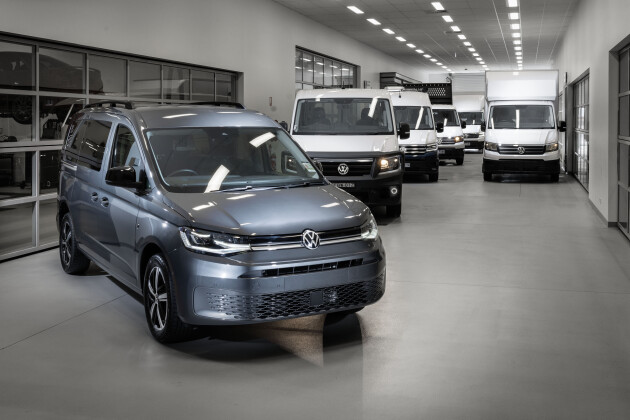 News
NewsVolkswagen expands local van conversion program
Volkswagen’s local division has unveiled five new ‘turn-key’ commercial vehicle solutions, including a wheelchair-ready Caddy and ambulance-focused Crafter
-
 News
News2023 Volkswagen Caddy pricing and features
The new-generation Volkswagen Caddy small van has received tech and safety improvements, with pricing unchanged following an increase earlier this year
-
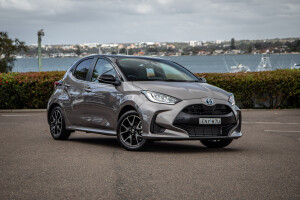 News
NewsAustralia's most fuel-efficient cars in 2022
Here's every car without a plug, on sale now, that sips five litres per 100km – or less
-
 News
NewsEOFY 2022: Best deals on utes and vans
Looking for a good deal this EOFY season? Look no further – we've found you all the latest commercial vehicle offers
-

Volkswagen reduces new and used vehicle service pack costs
-

2022 Volkswagen Caddy: Australian pricing and features
-
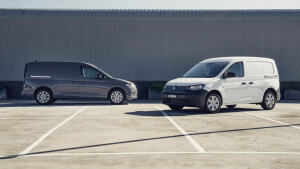
2022 Volkswagen Caddy range expands with new petrol engine
-
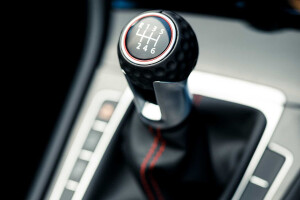
Volkswagen set to ditch manual transmissions from 2030 – report


